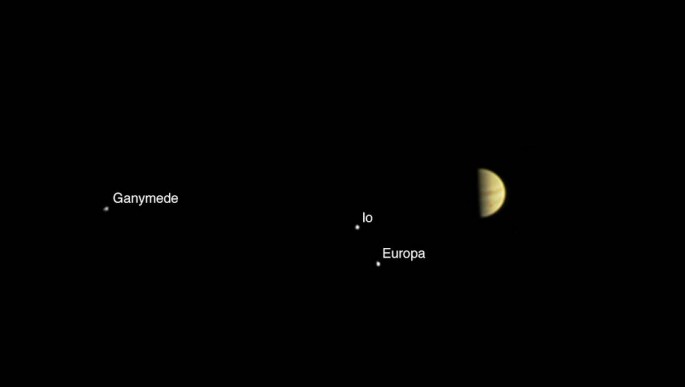NASA's Jupiter bound Juno spacecraft is now so close to the largest planet of the solar system, as it is scheduled to enter its orbit on Monday, July 4, where the probe just entered Jupiter's sphere of influence last week, according to mission scientists.
According to Juno's principal investigator, Scott Bolton from the Southwest Research Institute, Juno just crossed the boundary of Jupiter's turf, where the probe is closing in fast on the planet and already obtaining valuable data.
Juno was launched in 2011, as the probe has been zipping by deep space, pushing through powerful solar winds of streams of charged particles. Last June 24, the spacecraft passed through this "bow shock" just outside the magnetic field of Jupiter, which is a bubble in the planet's magnetosphere that controls particle movement in its atmosphere.
NASA scientists reveal that this crucial event was immediately detected by Juno's onboard scientific instruments. According to Juno team scientist, William Kurth from the University of Iowa, this bow shock is similar to a sonic boom, as solar winds blows through planets of speeds ranging to millions of miles every hour. As solar winds hit an obstacle, this creates turbulence.
Juno was already inside Jupiter's magnetosphere by June 25 which is the largest magnetic field in the entire solar system. Kurth says that it is so massive that Jupiter's magnetosphere glowed in visible light, which can be estimated to be twice the size of the full moon from Earth.
However, observers from Earth cannot see this teardrop shaped magnetic field on Jupiter, as it spans five astronomical units beyond Jupiter or five times 93 million miles.
These measurements obtained from Jupiter along with its boundary region around its magnetic field is apparently very complex, as mission scientists aim to investigate this further.
If successfully captured into Jupiter's orbit, Juno is scheduled to encircle the planet more than 30 times in the next 18 months to gather crucial data by its onboard suite of scientific instruments. The mission aims to map out the planet's magnetic and gravitational fields, including determining its core, and ultimately, reveal more clues about the evolution of our solar system.



























